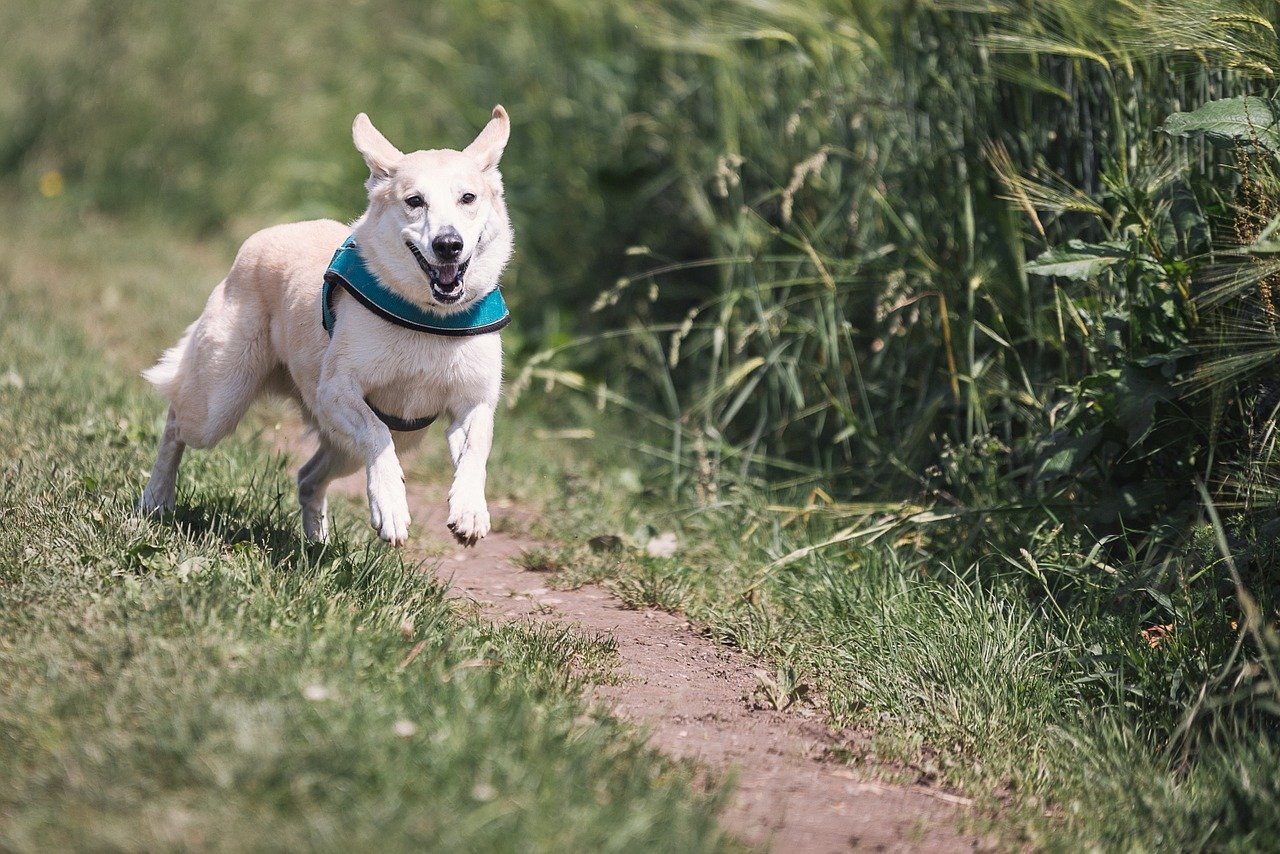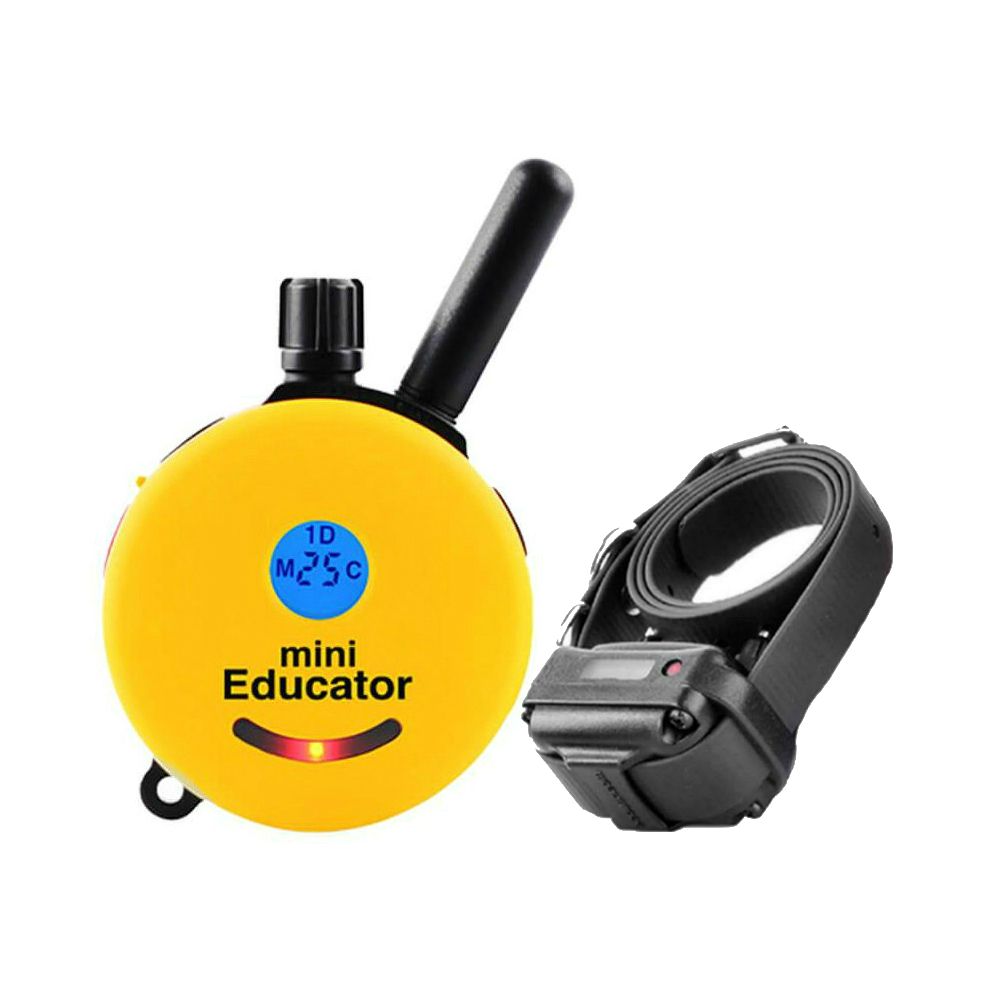“My dog ignores me and doesn’t come to me when I call him!” I hear this one all the time from our customers. In this article I will show you how to teach your dog to come to you when called with and without an eCollar.
Your dog must first know the verbal command and we will reinforce that command using extremely low levels of static stimulation ….
Teach Your Dog the “Come” Command without an eCollar
“Come” or “Here” is the first and most important command you should teach your dog. With this one command you can avoid almost every problem you may encounter. Often referred to as “recall,” your dog must learn that coming to you when called is non-negotiable; he must come promptly every time he is called, whether distractions are present or not.
Luckily, this is a relatively easy command to teach because most dogs will approach anybody who kneels down and spreads their arms. This is the position we will use to teach the “Come” command. You may choose whatever word you wish but be consistent with it from day one.
Lesson One: Teaching the behavior
With your dog on a 15′ or longer leash/lead, let him explore naturally. Kneel down and open your arms, tap your chest if necessary and your dog should start moving toward you. As he does, command “Come.”
When he gets to you, shower him with physical affection, verbal praise or even a food treat. This is positive reinforcement; he behaved as commanded and received a reward for it.
Repeat this a few times, pairing the command with the kneeling posture until he is successful.
Lesson Two: Adding the command
With your dog on the long lead and you standing at a distance, give the command, “Come” and simultaneously give a small tug on the leash. Release pressure on the lead the instant your dog turns toward you.
If he fails to move or stops moving toward you, repeat the tug and command. When your dog arrives at your side give Positive Reinforcement in the form of a reward such as praise, affection, a treat or toy.
Repeat this lesson a couple of times a day until he is coming to you on the first command and looking for his reward.
If he hesitates, correct with a leash tug. If you choose to work with food treats as a reward, do not rely solely on food. Mix it up with affection and praise.
For future training to be effective your dog will need to respond to praise as a reward. This phase is called conditioning the response. Some dogs will learn this in one or two sessions, while others may take days or even weeks and many repetitions.
Do not proceed to remote training until you are 100% sure your dog understands what to do when you give the command, “Come.”
Teach Your Dog the “Come” Command with an eCollar
You will be using the remote trainer as a Negative Aversion method of behavior modification. This means that the aversion (electronic stimulation in this case) will be removed (negative) when your dog responds with the correct behavior.
He will be given a command and receive stimulation until he completes the target behavior. The sooner he complies, the sooner the stimulation stops.
When your dog discovers for himself that he can stop the sensation with his behavior, he can control his situation. You will have achieved a training milestone.
Most dogs quickly adopt a positive attitude toward training once they understand how it works. You may be amazed at how fully engaged in the process your pet becomes.
Lesson One: Reinforcing Recall
Make sure you have set the collar to Continuous mode at the proper initial stimulation level. Test it.
Next, fit the e-collar on your dog, making sure both probes make contact with his skin. He should have his daily collar on and a long lead as well.
Let him explore for awhile until he engages with something in his environment. When he does, give the command, “Come” and begin tapping on the Continuous button while giving a light tug on the lead (you may want to practice this without your dog to get the timing coordinated).
Each tap will give your dog a “nick” from the collar. Stop tapping and tugging the instant your dog moves toward you. Timing is crucial — it must be immediate to be effective. Praise him when you stop tapping.
If your dog stops before reaching you, begin tapping again and repeat the command. Stop tapping and tugging when he moves toward you. Repeat as needed until he reaches you.
Reward him lavishly, then release with an “okay” and engage in some play. Work this 3-5 times, being sure to reward him when he reaches you and then release him so he can explore freely. Remember to keep a positive, upbeat attitude throughout the lesson.
At some point your dog will discover that to stop the annoying tapping sensation he must come to you immediately when called. This may happen after three trials or it may take a week. Try to work on this a couple of times per day and never give the command unless it is in a training session.
Lesson Two: Distraction Training
Once your dog has discovered what is expected of him and is responding consistently, you are ready to begin testing how well conditioned his responses truly are by introducing distractions. Most dogs are overwhelmed when initially introduced to distractions and it may seem as though all your hard work and training have gone straight out the window. This is normal.
The first step is simply to train your dog in different areas at different times. If you usually train in the front yard, go inside. Train in a variety of familiar environments at random times. When your dog is performing well in a variety of environments and you are sure he is conditioned to obey your command you can up the ante by working him in new locations.
Once you have compliance in any location you may start introducing other distractions such as the presence of other dogs or people. Start slowly, at a distance from the distraction, and work the recall drill.
When he succeeds, move closer to the distraction and repeat. Do not expect that your dog will succeed in one or even two sessions. He will not. Here is where the conditioning is tested against his instincts. You are asking a lot of your best friend, so give him all the time he needs to succeed in the presence of distractions. For many dogs, distraction training continues as new challenges arise.
When environmental distractions have been overcome, introduce even more tempting distractions. Every dog has a few things that are very difficult for him to resist, but you want to make sure that he will obey even in the presence of these distractions.
If you can determine the thing your dog finds irresistible, and condition him in its presence, you will have succeeded. Some things that may be used for distractions include critters such as squirrels, cats or birds, other dogs, people, bicycles or vehicles.
Whatever he finds irresistible is what you want to use. You may need to enlist the help of an assistant to pedal by or walk past with their dog. Be creative and try new things. The more situations your dog is exposed to, the more reliable your dog will be in new environments.
What if…
If you make mistakes in timing or use of verbal commands that cause your dog to become confused, you must stop training for the day. End the session by engaging in play activity with your dog. Resume training the following day. On occasion, an owner sufficiently confuses a dog to the point where training must start over with a new command. If this happens, train the new command without the e-collar first and proceed only when your dog demonstrates mastery of the command.
If your dog at any time acts fearful or reacts strongly to the stimulation stop activating the collar and engage your dog in a fun activity. Wait until the next day to try again and lower the initial setting. If your dog reacts or vocalizes on the lowest setting, cease to use the remote trainer and return to lead training.




Subscribeto get the latest dog training articles, latest offers & news.
You have Successfully Subscribed!